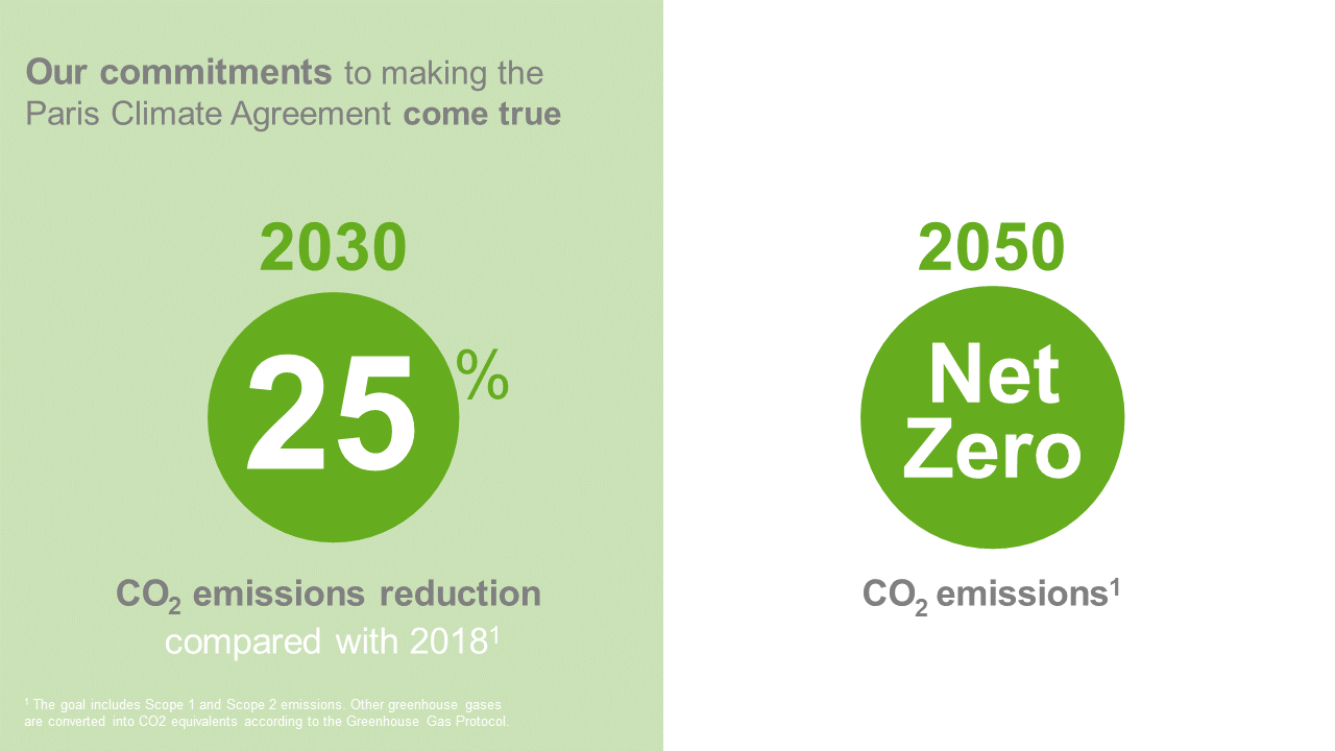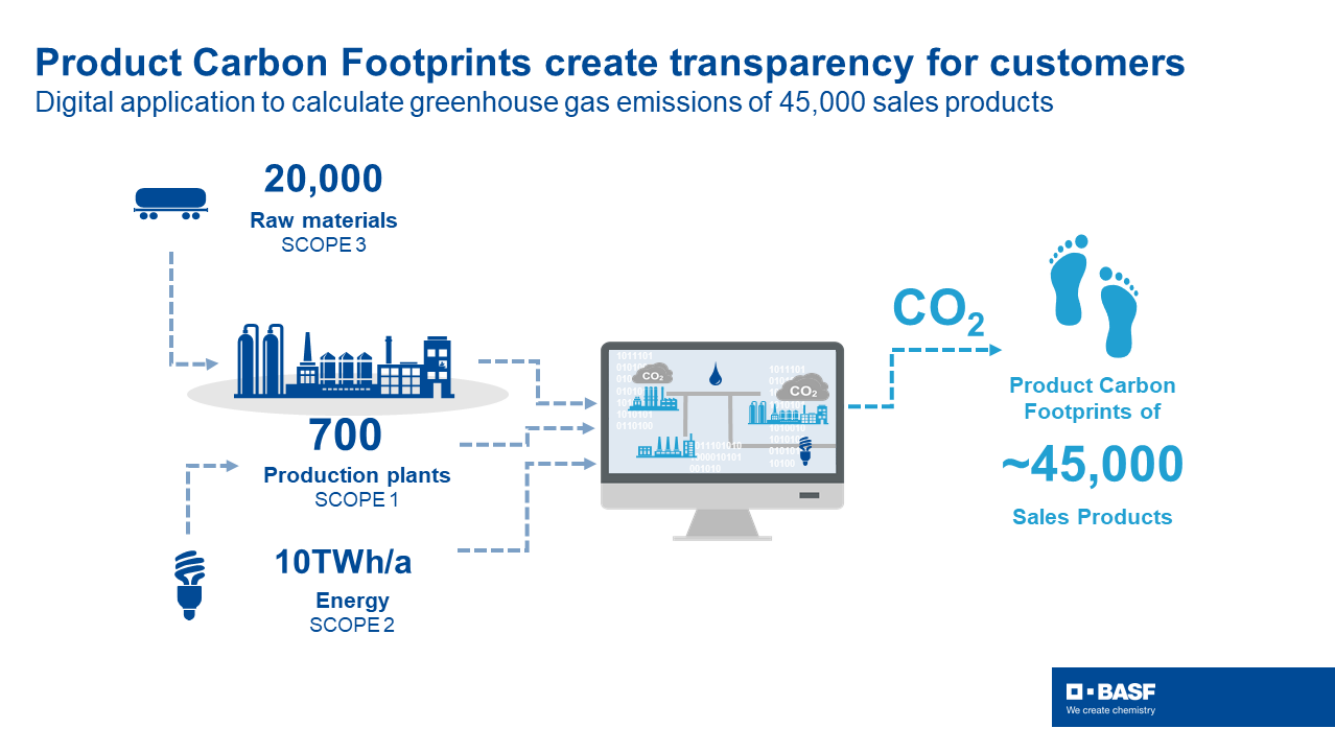
Along our journey to reach net zero by 2050, BASF has set a goal to reduce our greenhouse gas emissions worldwide by 25 percent by 2030 compared with 2018 – and to achieve this despite targeted growth and the construction of a large Verbund site in South China. Excluding the effects of the planned growth, this means cutting CO2 emissions in half in the current business by the end of this decade.
In 2018, BASF Group’s worldwide emissions amounted to 21.9 million metric tons of CO2 equivalents. In 1990, this figure was roughly twice as high. The new 2030 emissions goal represents a reduction of approximately 60 percent compared to 1990 levels, which exceeds the European Union’s target of minus 55 percent.



